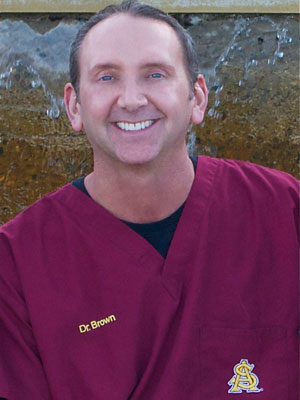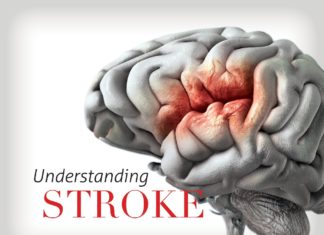The future of chiropractic economics: better admissions standards and training.
By Steven Brown, DC, Lac
The American Chiropractic Association has launched a campaign, The National Medicare Equality Petition, to enact federal legislation that would achieve full physician status for DCs in Medicare.
Chiropractic inclusion in the Medicare program was established in 1972 and consists of coverage of exactly one service: spinal manipulation. Services that are not covered: Evaluation & Management services, X-ray imaging, extremity manipulation, physiotherapy and acupuncture.
From the standpoint of practice economics, Medicare patients are only a small portion for many DCs. However, Medicare’s impact on overall provider reimbursement is significant. Medicare serves as a model for private insurance plans. Medicare’s stance on chiropractic allows private insurance plans to use the Medicare model to justify the elimination of coverage for other chiropractic services. If Medicare and private insurance plans were mandated to cover all medically necessary services doctors of chiropractic are licensed to provide, it would be a giant step forward for the profession economically.
The National Medicare Equality Petition is well-intentioned, but why is Medicare coverage for chiropractic services so limited in the first place? The issue is not whether doctors of chiropractic are licensed to provide these additional services. We are licensed in all 50 states to provide all the additional services in question, and the Centers for Medicare & Medicaid Services (CMS) knows this.
Then why is it a struggle to get Medicare coverage for all the services we are licensed to provide? No other health care profession has its Medicare coverage limited to only one of the many services its members are licensed to provide to the public. What is different about the chiropractic profession that allows for our continued marginalization by the Medicare establishment?
One reason is the inadequacy of the chiropractic educational system. When CMS evaluates the chiropractic profession for increased coverage under the Medicare program, it will start with an evaluation of the chiropractic educational system and compare it to the educational systems of other professions that have full physician status.
What CMS will find is this: Medical doctors and osteopathic doctors (both of whom have full physician status with Medicare) are better educated and trained than DCs.
Step 1: Upgrade Our College Admission Standards
Graduate programs for these other professions require a bachelor’s degree and a standardized admission test (MCAT) for admission. Only one chiropractic college currently requires a bachelor’s for admission, National College of Chiropractic. No chiropractic college currently requires an entrance examination.
Jann Bellamy, an attorney and contributor for Science-Based Medicine, explains how chiropractic college admission standards pale compared to other professional graduate programs:
“[T]he Council on Chiropractic Education’s standards for admission to Chiropractic college are, to my knowledge, the lowest of any program awarding a doctoral degree. As you likely know, a student can’t get into graduate school in the standard American college or university (even to pursue a master’s degree, much less a Ph.D) without first obtaining an undergraduate degree and attaining an acceptable score on the Graduate Record Exam. Other graduate programs – such as law, veterinary and medical schools – have their own rigorous entrance exams. Not Chiropractic college. A student need not have an acceptable exam score because there is no entrance exam for Chiropractic college. In fact, the student doesn’t even need a college degree – only 90 undergraduate hours, including 24 hours of basic science courses, and a 2.5 (“C”) average. In other words, the entrance requirements for a D.C. degree are less selective than those for a master’s degree in one of the sciences.”1 (Note: The above reference is from 2012. Effective January 2014, the CCE raised the GPA requirement to a 3.0 average.2)
It is not only professionals outside of chiropractic who are critical of our college admissions standards. Dr. James Winterstein, president emeritus of National University of Health Sciences, who introduced the bachelor’s degree requirement to National College of Chiropractic in 1999, addressed this issue in announcing the degree requirement:
“Our concerns about the need for the baccalaureate prior to entry into National College of Chiropractic were centered on the idea that too many of our students had an inadequate general education, which we believe to be essential preparatory work for the rigors of a professional education. This is problematic in the classroom as two-year students sit alongside graduate students, causing the faculty to teach to the lowest common denominator. Further, this inadequate general education results in a graduate whose vision is too narrow for the needs of our society.”3
Murphy, et al., all practicing doctors of chiropractic, noted the following in their 2008 article, “How Can Chiropractic Become a Respected Mainstream Profession? The Example of Podiatry:”
“Consideration should also be given to upgrading admission requirements to Chiropractic schools. In podiatric medicine, such upgrading, which included the requirement of the Medical College Admission Test (MCAT), a requirement of medical school admission, is considered one of the significant events in the profession’s history, giving the profession legitimacy in its calls for parity with medicine. Lest there be concern amongst Chiropractic colleges for diminishing enrollment if this type of upgrade were instituted, it should be noted that podiatric medicine experienced an increase in students following the institution of the MCAT requirement.”4
Step 2: Increase Clinical Training and Residency Opportunities
In addition to the embarrassing admissions standards at too many of our chiropractic colleges, the lack of clinical training and experience is also an issue. DCs have a miniscule amount of clinical training and experience in comparison to other health care profession doctoral programs. Nearly every MD or DO does some type of residency after graduation, providing them with more clinical experience than DCs, who have no access to such a residency. (Some chiropractic postgraduate programs are referred to as “residencies,” but none parallels a medical or osteopathic residency program.)
Wyatt, et al., addressed this issue in their 2008 paper, The Necessary Future of Chiropractic Education: a North American Perspective”:
“Probably of most critical importance in making positive change in our current (Chiropractic) educational programs is the establishment of mandatory post-graduate internships and residencies with hospital and interdisciplinary training. Exposure to a large volume and variety of patients is critical to our students training if the profession is to take a place at the center of our mainstream health care system. Interns and residents must be routinely exposed to patients with conditions that represent the full spectrum of potential diagnoses that are considered by Chiropractors. This first hand, on-the-job experience by new Chiropractors, not just via didactics or textbook exposure, is paramount to the best clinical experience available. Certainly hospital rounds would be a great advantage in this respect. Rigorous post-graduate residencies, such as is the case currently for (Chiropractic) radiology, need to be developed to train our brightest new doctors to be leaders.”5
Although the chiropractic profession has no postgraduate hospital-based residency programs, DCs do have a clinical internship, which is a part of their training before graduation. However, Murphy, et al., have addressed the weaknesses of this internship experience:
“It is essential that the Chiropractic profession establish hospital-based residencies. There is a tremendous void in how Chiropractic graduates develop any meaningful hands-on clinical experience with real patients in real life situations. It is widely recognized in medical and podiatric education that abundant exposure to clinical environments is essential to developing top-quality professions. The Council on Chiropractic Education requirement of 250 adjustments forces interns to use manipulation on patients whether they need it or not, and the radiographic requirement forces interns to take radiographs on patients whether they need them or not. Rather than focus on interns meeting certain numerical requirements, interns should be encouraged to develop clinical decision making and patient management skills. Further, the emphasis on achieving a certain number of procedures as opposed to the acquisition of skill and knowledge impedes the development of professional moral reasoning by training interns to use patients as a means to meet their own goals, rather than focusing on the needs of the patients themselves. The Chiropractic internship should, as with medicine and podiatry, occur after graduation.”4
The Road to Full Physician Status
In order to achieve full physician status with Medicare, the chiropractic profession must increase its education and training requirements to compare with any other profession that has such status. Chiropractic college admissions standards must be the equal of medical and osteopathic professions, and postgraduate residencies must become standard. The National Medicare Equality Petition is well-intentioned, but improvements in chiropractic economics will not occur without improvements in chiropractic education.
References
- Bellamy J. “Dept. of Education to Council on Chiropractic Education: ‘Straighten Up!'” Science-Based Medicine, June 2012.
- Prospective Students – Academic Requirements: D.C. Prerequisites. Association of Chiropractic Colleges.
- Winterstein J. “NCC Raises the Admission Standard: Baccalaureate Degree Now Required.” Dynamic Chiropractic, Sept. 20, 1999.
- Murphy D, Schneider M, Seaman D, Perle S, Nelson C. How can chiropractic become a respected mainstream profession? The example of podiatry. Chiropractic & Osteopathy 2008;16:10.
- Wyatt L, Perle S, Murphy D, Hyde T. The necessary future of chiropractic education: a North American perspective. Chiropractic & Osteopathy, July 2005.
Author:
 Dr. Steven Brown attended law school at California Western School of Law in San Diego; then decided on a career in chiropractic instead after having success with chiropractic treatment of sports injuries. He completed his DC degree and an acupuncture certification in 1994 at Logan University. Dr. Brown practices in Tempe, Ariz. (www.brownchiro.com) and is a faculty associate in the Kinesiology Department of Arizona State University, teaching functional anatomy, and kinesiology & exercise physiology.
Dr. Steven Brown attended law school at California Western School of Law in San Diego; then decided on a career in chiropractic instead after having success with chiropractic treatment of sports injuries. He completed his DC degree and an acupuncture certification in 1994 at Logan University. Dr. Brown practices in Tempe, Ariz. (www.brownchiro.com) and is a faculty associate in the Kinesiology Department of Arizona State University, teaching functional anatomy, and kinesiology & exercise physiology.









